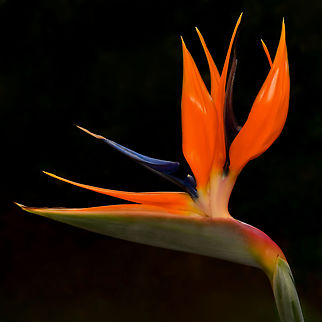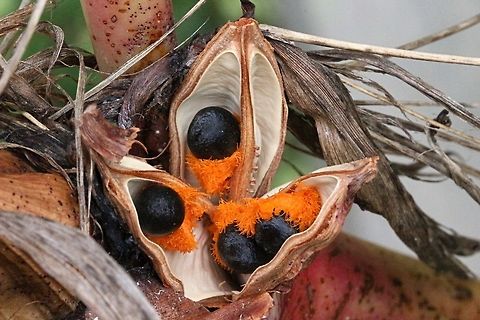
Appearance
The plant grows to 2 m (6.6 ft) tall, with large, strong leaves 25–70 cm (9.8–28 in) long and 10–30 cm (3.9–12 in) broad, produced on petioles up to 1 m (39 in) long. The leaves are evergreen and arranged in two ranks, making a fan-shaped crown. The flowers stand above the foliage at the tips of long stalks. The hard, beak-like sheath from which the flower emerges is termed the spathe. This is placed perpendicular to the stem, which gives it the appearance of a bird's head and beak; it makes a durable perch for holding the sunbirds which pollinate the flowers. The flowers, which emerge one at a time from the spathe, consist of three brilliant orange sepals and three purplish-blue petals. Two of the blue petals are joined together to form an arrow-like nectary. When the sunbirds sit to drink the nectar, the petals open to cover their feet in pollen.
Naming
Its scientific name commemorates Charlotte of Mecklenburg-Strelitz, queen consort of the United Kingdom.References:
Some text fragments are auto parsed from Wikipedia.